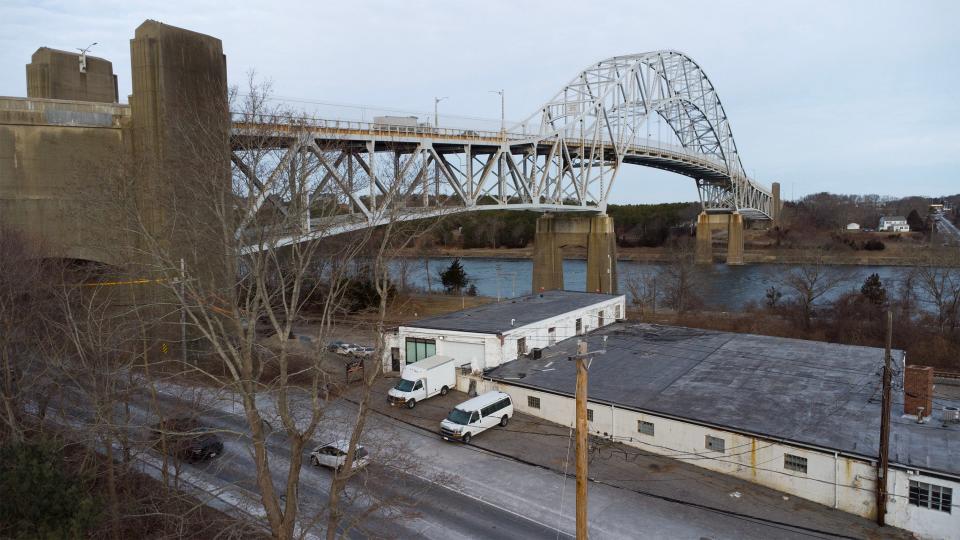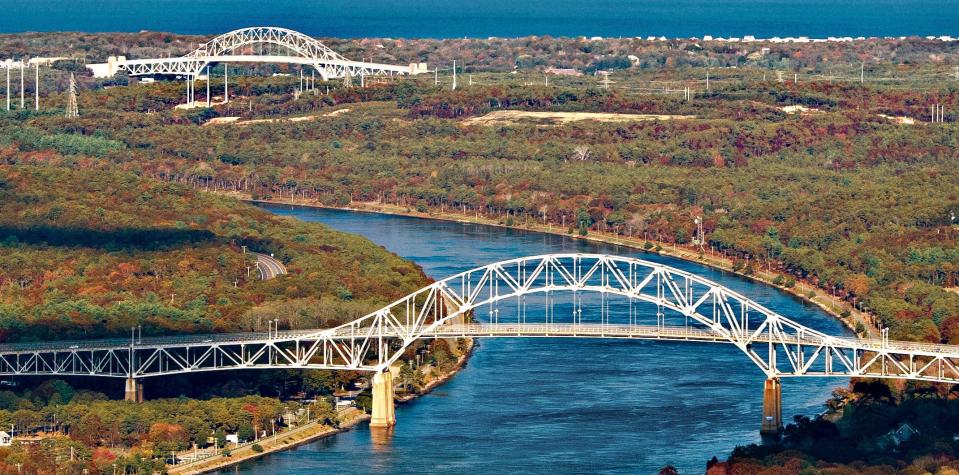2024 Cape Cod Canal bridges outlook: More traffic? When will Sagamore, Bourne be replaced?
After news broke in December that the first round of funding had been secured for the replacement of the Bourne and Sagamore bridges, a renewed sense of hope was resurrected for a project long mired in setbacks and uncertainty.
But as U.S. Sen. Elizabeth Warren, D-Massachusetts, told the Times in December, the initial $372 million of funding underscored the fact that “we still have a long way to go” before the project — estimated to cost around $4.5 billion — sees completion.
In the meantime, a number of other factors, from additional funding to design considerations, need to fall into place before ground can break on the actual replacement. And officials said they expect some noteworthy developments within the next year.

Sagamore Bridge funding and timeline
Kristy Senatori, executive director for the Cape Cod Commission, said funding for the project will be rolled out in phases. On top of the $372 million from the Federal Multimodal Project Discretionary Grant program, money from other grants were applied for as well.
“We look forward to hearing what we hope is good news about the Bridge Investment Program — the $1.07 billion grant request — in the coming months,” Senatori said. “These grant awards will also put a firm timeline on the project, as we anticipate there'll be specific deadlines associated with the grant funding.”
Bourne Bridge 'can't be forgotten'
Senatori said more information in the coming months regarding the phase two Bourne Bridge replacement could also be announced on the back of phase one funding.
“We acknowledge the importance of the strategic decision to initially focus on funding requests for the Sagamore Bridge replacement, but also want to be clear that the Bourne Bridge is important and can't be forgotten,” Senatori said.
Here's how officials hope to secure bridge replacement money
Gov. Maura Healey’s office announced on Aug. 14 an application plan for securing $1.44 billion in federal discretionary grant money for the project. The grants included $150 million from the Nationally Significant Multimodal Freight & Highway Projects program and $222 million from National Infrastructure Project Assistance. They were closely followed by the Bridge Investment Program, the largest share, at over $1.07 billion.
On Dec. 4, the Massachusetts Department of Transportation announced a joint application with the U.S. Army Corps of Engineers seeking $1.06 billion in federal funding.
Will the Cape Cod Canal bridges need major rehabilitation before they can be replaced?
The question of whether or not major rehabilitation for the bridges will be required — a costly and time consuming process — has loomed over the project thus far. Cape Cod Commission Deputy Director Steven Tupper said rehabilitation would result in extended lane closures on both bridges and a delay in the ability to secure funding for the project.
“If the bridges are not replaced in an expedient fashion, the Army Corps has indicated major rehabilitation would be necessary,” Tupper said Monday in a meeting of the Metropolitan Planning Organization. “If either of the bridges undergoes a major rehabilitation, it would be full bridge closure for four to six months, and temporary lane closures totaling 12 to 16 months.”
If the replacement project doesn’t commence as expected, rehabilitation would be necessary for the Sagamore in the 2025-2027 timeframe and the Bourne Bridge within the 2029-2031 timeframe, according to a March 2020 report authored by the Army Corps.
The report’s estimated cost for major rehabilitation on both bridges totals around $342 million.
“Any appreciable delay in decision-making or funding could force the Government to pursue major rehabilitation instead of bridge replacement in order to maintain reliability and safety of vehicular traffic over the Canal in the near term,” the report said.
Warren told the Times in December the project could see more necessary funding as soon as spring, but no further funding announcements have been made as of Wednesday.

Environmental considerations for bridge work
Another agency involved in the project is the Massachusetts Environmental Policy Act Office.
The agency, commonly referred to the MEPA office, is tasked with studying the environmental impacts of projects that require state permitting, financial assistance or land disposition. And because the project is being handled by both state and federal agencies, the MEPA review process is being done alongside the National Environmental Policy Act office review.
An environmental notification form was submitted by the state Department of Transportation to the MEPA office in May 2023. Next, a draft environmental impact statement — analyzing impacts to wetlands, climate change, environmental justice protocols and other factors — will be filed and reviewed by the MEPA office.
There are no legal requirements outlining a timeframe the state transportation department is required to compile the draft environmental impact statement within, but an official from the MEPA office said they are required to conduct a 37-day review along with a 30-day period of public comment.
Cape Cod Canal bridges were not designed for 38 million crossings each year
The Cape Cod Canal bridges were designed and built in the 1930s, seeing roughly one million crossings annually, Tupper said. These days, he said that figure has shot up to nearly 38 million, about the same as the Golden Gate Bridge in San Francisco — which is about six times the length and twice the width.
“Things have changed since 1935, certainly an obvious statement,” said Tupper. “Given the way these bridges were designed, it's really a challenge to continue to maintain them.”
In order to combat the peak season traffic and structural deficiencies of the Canal bridges, Tupper said a number of modern design considerations are being hashed out to ensure vehicular, pedestrian and bicycle traffic can traverse the canal with relative ease.
At the moment, the design for a replacement is a twin-arch style bridge with three lanes in each direction, separated by a median divider. There is also a shoulder for future repairs and maintenance, along with a shared-use path for pedestrians and cyclists.
“There were a number of different concepts, and this one (the twin-arch) was identified as preferred, and it certainly nods to the look of the existing bridges, but as a modern structure,” Tupper said.
Walker Armstrong reports on all things Cape and Islands, primarily focusing on courts, transportation and the Joint Base Cape Cod military base. Contact him at WArmstrong@capecodonline.com. Follow him on Twitter: @jd__walker.
Thanks to our subscribers, who help make this coverage possible. If you are not a subscriber, please consider supporting quality local journalism with a Cape Cod Times subscription. Here are our subscription plans.
This article originally appeared on Cape Cod Times: Cape Cod Canal bridges: Here's what we expect to happen in 2024.

